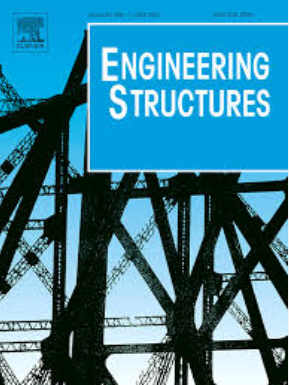Seismic performance of reinforced concrete column with repeated damage and repairs by resin injection
IF 5.6
1区 工程技术
Q1 ENGINEERING, CIVIL
引用次数: 0
Abstract
In regions prone to earthquakes, it is possible that reinforced concrete (RC) columns may experience multiple cycles of earthquake-induced damage and subsequent repair. Moreover, in practical situations, RC columns subjected to axial forces are often repaired without the use of temporary support systems to bear the weight of the superstructure, and frequently while residual drift remains. This study conducted cyclic loading tests and resin injection repair tests on RC columns twice to evaluate their seismic performance when repeatedly damaged and subsequently repaired. The resin injection repairs were performed with axial forces applied to the columns, considering the presence or absence of residual drift at the time of repair as an experimental factor. The results showed that although the resin injection repairs restored the maximum lateral load capacity of the columns to their original levels, the stiffness was not fully recovered. A significant finding was a 10 % to 20 % reduction in yield stiffness from the first to the second repair. Furthermore, incremental dynamic analyses were performed to investigate the effects of changes in lateral load capacity after resin injection repairs. The numerical results indicate that seismic response displacement increased significantly for small to moderate seismic motions due to resin injection repairs, while the response displacement at the ultimate level of the columns remained largely unaffected. Moreover, it was observed that the number of resin injection repairs and any asymmetry in seismic performance post-repair had a less substantial impact on the seismic response than the differences observed between as-built and repaired columns.
求助全文
约1分钟内获得全文
求助全文
来源期刊

Engineering Structures
工程技术-工程:土木
CiteScore
10.20
自引率
14.50%
发文量
1385
审稿时长
67 days
期刊介绍:
Engineering Structures provides a forum for a broad blend of scientific and technical papers to reflect the evolving needs of the structural engineering and structural mechanics communities. Particularly welcome are contributions dealing with applications of structural engineering and mechanics principles in all areas of technology. The journal aspires to a broad and integrated coverage of the effects of dynamic loadings and of the modelling techniques whereby the structural response to these loadings may be computed.
The scope of Engineering Structures encompasses, but is not restricted to, the following areas: infrastructure engineering; earthquake engineering; structure-fluid-soil interaction; wind engineering; fire engineering; blast engineering; structural reliability/stability; life assessment/integrity; structural health monitoring; multi-hazard engineering; structural dynamics; optimization; expert systems; experimental modelling; performance-based design; multiscale analysis; value engineering.
Topics of interest include: tall buildings; innovative structures; environmentally responsive structures; bridges; stadiums; commercial and public buildings; transmission towers; television and telecommunication masts; foldable structures; cooling towers; plates and shells; suspension structures; protective structures; smart structures; nuclear reactors; dams; pressure vessels; pipelines; tunnels.
Engineering Structures also publishes review articles, short communications and discussions, book reviews, and a diary on international events related to any aspect of structural engineering.
 求助内容:
求助内容: 应助结果提醒方式:
应助结果提醒方式:


